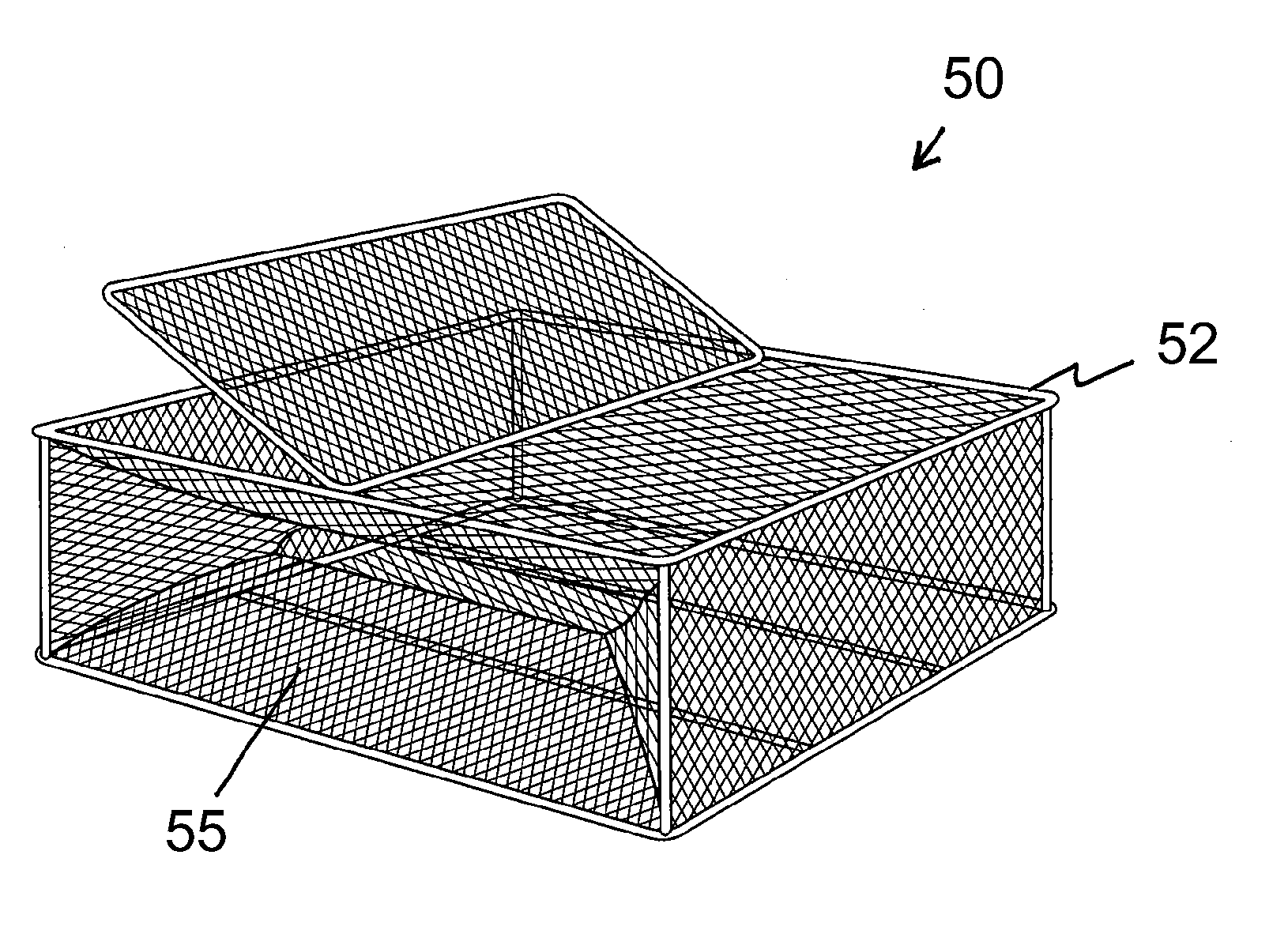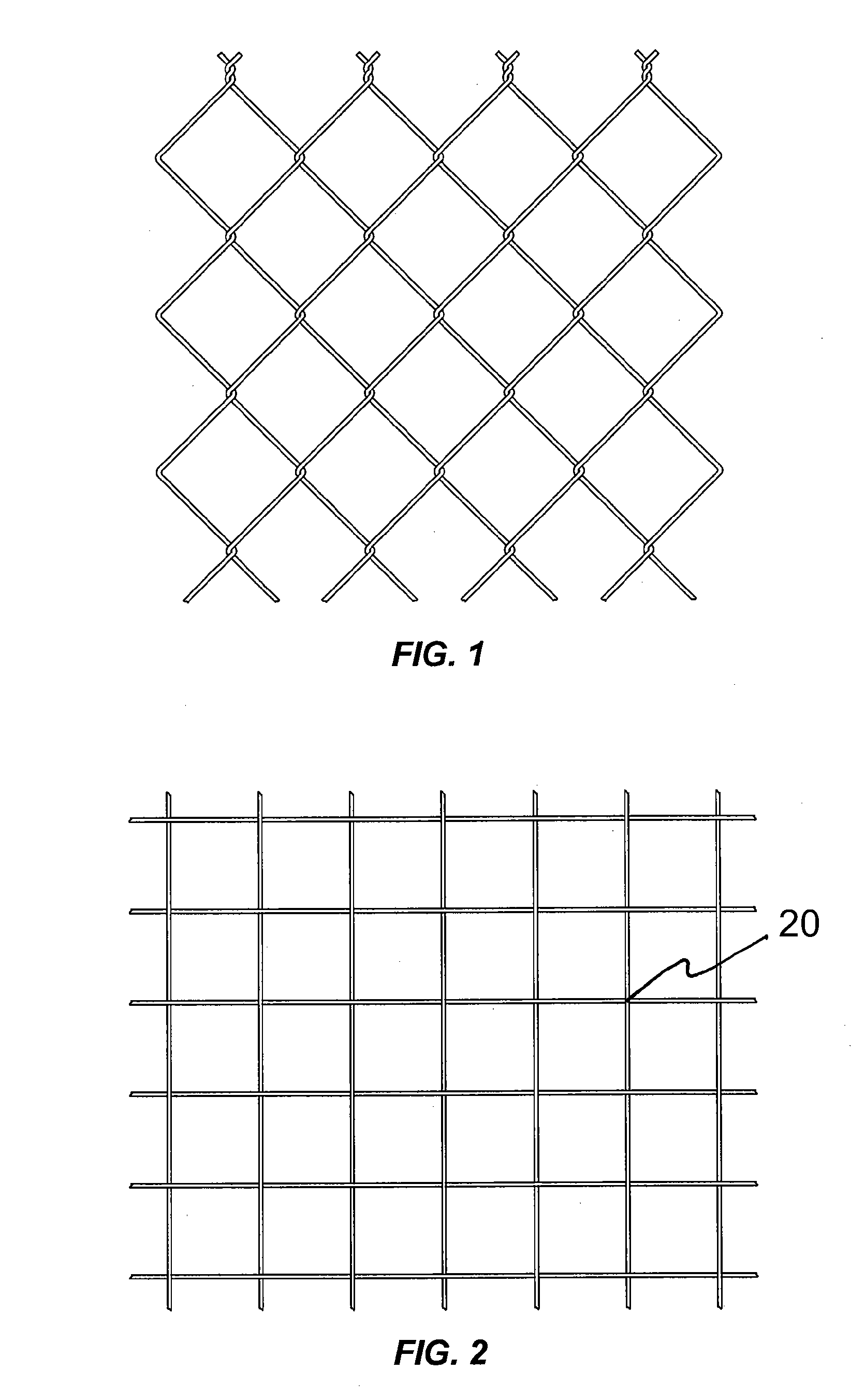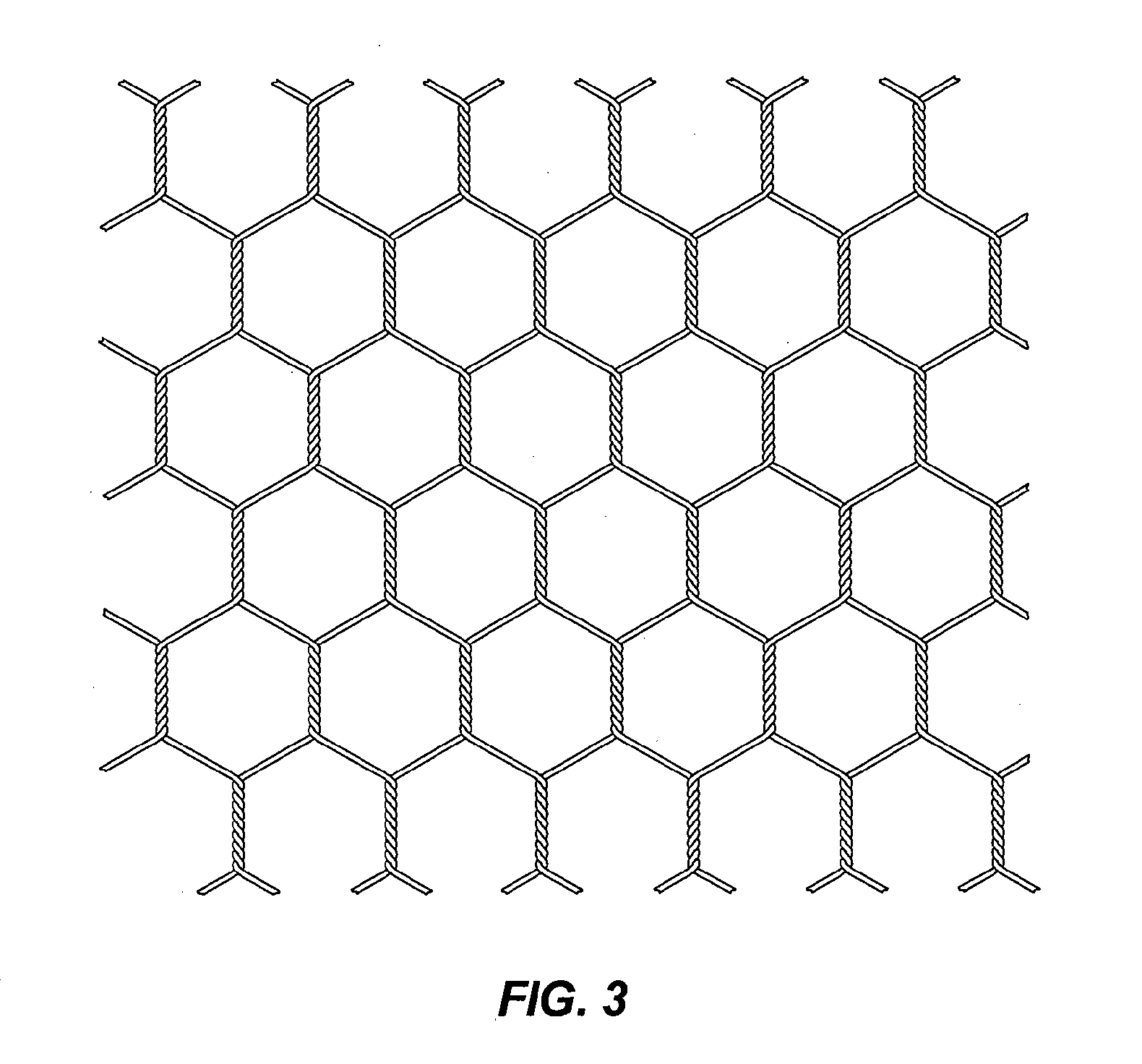Copper alloy enclosures
a technology of copper alloy and enclosure, applied in the direction of biocide, fishing, transportation and packaging, etc., can solve the problems of increasing drag and weight, affecting marine surface health, and biofouling in cooler waters, so as to reduce the growth of an organism
- Summary
- Abstract
- Description
- Claims
- Application Information
AI Technical Summary
Benefits of technology
Problems solved by technology
Method used
Image
Examples
example 1
[0035]Silicon bronze alloy wire having a diameter of 4 mm, and having the following composition will be obtained from a commercial source (Luvata Appleton, LLC, Kimberly, Wis.).
[0036]Composition of silicon bronze alloy.
Element% composition (wt / wt alloy)Silicon3.0Manganese1.0CopperBalance
(The silicon bronze alloy may have trace amounts of lead, iron, zinc, and nickel.) The 4 mm wire will be fabricated into a mesh similar to FIG. 2, with spot welding at the junctions of the wire.
[0037]The silicon bronze wire weave will be submerged in Atlantic Ocean water off the coast of Massachusetts for three months, with weekly observation to quantify (observable) corrosion and biofouling. As a control, a 4 mm welded galvanized steel mesh, and a 4 mm welded 90 / 10 copper / nickel alloy mesh also will be submerged in nearby water, and observed on the same schedule. The weaves will not be cleaned until the end of the trial.
[0038]Within weeks of placement in the water, both the ...
example 2
Crab Pens of Welded Wire Silicon Bronze Alloy and 90 / 10 Copper Nickel Alloy
[0040]Two 30 cm×100 cm×100 cm crab pens will be fabricated. Pen 1 will be fabricated from welded wire silicon bronze alloy using the alloy of EXAMPLE 1. Pen 2 will be fabricated from a 90 / 10 copper nickel alloy with welding. Both pens will have 1.5 cm spacing between wires, and be of identical construction save the alloy composition. Five Lake Pontchartrain Blue Crabs (Callinectes sapidus) will be placed in each pen, and the pens will be placed in approximately 2 meters of water in Lake Pontchartrain (Louisiana, U.S.A.) for two months for observation. The crabs will be able to feed on their normal diet. After about three weeks, the crabs in Pen 2 (90 / 10 copper nickel) will begin to die, with all of the crabs in Pen 2 dead by week five. All five crabs in Pen 1 (silicon bronze alloy) will be alive and healthy at the end of the two month trial, and at least one of the crabs will have molted.
example 3
Lobster Trap with Silicon Bronze Wire Weave
[0041]Five standard Atlantic Lobster wire-type traps, will be purchased from a commercial trap supplier (e.g., Rainbow Net Rigging, Ltd., Dartmouth, Nova Scotia) and the polyvinyl-coated steel mesh will be replaced with silicon bronze wire mesh from EXAMPLE 1. The test traps will have identically sized kitchens and parlors and use the same bait bags. The traps will be placed in service with 200 standard polyvinyl-coated steel weave lobster traps from the same manufacturer. After two months of service, the silicon bronze traps will be notably less fouled than the polyvinyl-coated steel weave traps. Additionally, the lobsters harvested from the silicon bronze traps will have fewer shell blemishes and appear healthier upon harvest.
PUM
| Property | Measurement | Unit |
|---|---|---|
| diameter | aaaaa | aaaaa |
| thick | aaaaa | aaaaa |
| thick | aaaaa | aaaaa |
Abstract
Description
Claims
Application Information
 Login to View More
Login to View More - R&D
- Intellectual Property
- Life Sciences
- Materials
- Tech Scout
- Unparalleled Data Quality
- Higher Quality Content
- 60% Fewer Hallucinations
Browse by: Latest US Patents, China's latest patents, Technical Efficacy Thesaurus, Application Domain, Technology Topic, Popular Technical Reports.
© 2025 PatSnap. All rights reserved.Legal|Privacy policy|Modern Slavery Act Transparency Statement|Sitemap|About US| Contact US: help@patsnap.com



